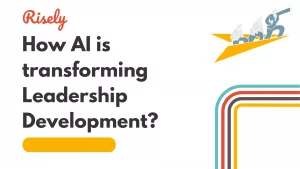Decision-making is the process of drawing a line and choosing between two options to maximize benefit and minimize risk. The process involves considering the factors affecting the decision, evaluating its performance, and determining whether to change or repeat it.
Managers face complex decisions every day at work. Decision-making can be challenging for managers, but it is essential for the success of an organization. Effective decision-making improves organizations’ performance and supports individual and team members’ growth and success.
Decision-making models like the 5-step paced model suggested in this blog are tools that help managers process information, make well-informed decisions, and act on them effectively. They help managers draw a line between one option and another. It helps managers make informed decisions that maximize benefits while minimizing risks or costs. So, without further ado, let’s get started and discover the paced decision making model.
What is the paced decision making model?
The paced decision making model is a tool that helps managers make rational decisions in teams. This approach allows people to take the time they need to ensure that their decisions are the best possible options for them and avoids rushed or hasty decisions that may not be in their best interest. It is a great way to get out of deadlocks when no single option can be the best easily. The 5-step paced decision making model is a tool that can help managers make fast, effective decisions. The model consists of five steps: problem, alternatives, criteria, evaluation, and decision. The steps help managers collect the necessary information, assess the situation, make a decision, put the decision into action, and monitor the results. The paced decision making model can be used in many settings, such as strategic planning and weighing alternatives, marketing, and operations. By using this model effectively, managers can create better decisions that run faster and more effectively.The paced decision making model process
The paced decision making model is a five-step process for making decisions. The five significant steps of this process are:Problem
The first step in the paced decision making model is recognizing and understanding the problem that the team is facing. Like the typical problem-oriented research process, it begins with defining the problem and how it impacts the team. Further, at this stage, managers can also identify what decisions they need to take to overcome this impact.Alternatives
In the next stage of the paced decision making process, the manager needs to identify alternatives. For instance, if your team is facing internal conflicts impacting your productivity. It would help if you looked at the possible solutions that you can use to overcome this situation. For example, do you go for a one-on-one meeting with every team member or bring all of them to the same table? Listing out all the viable opportunities is the critical action here.Criteria
Once the alternatives are identified, it is essential to set criteria for choosing one. For instance, does going with alternative A have a lower potential impact on your team than alternative B? Can you guarantee that everyone will follow through with their part of the plan? Once these questions are answered, and the decision can be based on sound reasoning, go ahead and make it! Good criteria should lead you to make decisions that suit your team’s needs correctly. It should take into account the essential factors and desired outcomes.Evaluate
Once the decision has been made, it is essential to evaluate its impact on your team. Managers can do this evaluation through the criteria that were chalked out in the previous step. Make sure that you revisit and tweak your ideas based on this assessment. Sometimes, it’s necessary to make changes to achieve better results for your team members. Here, by evaluating each option against the criteria, managers can pick the best alternative for their teams even when multiple choices might look close.Decision
In the final step of the paced decision making framework, a manager picks the best alternative from the available selection. Then, with thoughtful consideration of the efforts required and the expected outcome, the highest-scoring alternative is taken forward. The decision-making process is finally complete! By taking the time to identify all possible outcomes, and their respective risks and set criteria for making the final decision, a manager has successfully paced their decision-making process.Other Interesting Reads
Example of the paced decision making model at work
One example of a PACED decision making model in the workplace is HR managers using a standardized process for recruitment and hiring. The process can include posting job advertisements, screening resumes, conducting initial interviews, conducting reference checks, making job offers, and onboarding new hires. To make it more effective and in line with the paced model, an HR manager can begin by defining their staffing needs and creating criteria for picking suitable candidates. By following this process, HR managers can ensure that each hiring decision is made in a consistent and systematic way, taking into account all relevant information and minimizing the risk of bias or inconsistency. In addition, it creates a pace for hiring decisions, leading to more efficient and effective recruitment and staffing outcomes.What are the advantages of the paced decision making process?
A rational approach to problem-solving
The most crucial advantage of paced decision making is that it leads to rational problem-solving; this, in turn, helps motivate team members and ensure success. In addition, when everyone understands what’s expected from them and decisions are made based on sound reasoning, employees are much more likely to feel engaged in their work environment.Includes multiple perspectives
The decision-making process is not limited to just one perspective, which can help avoid groupthink. Multiple alternatives are often included in making decisions, leading to a more inclusive and diverse approach. In addition, it allows for a better understanding of the situation and possible solutions.Rapid fire decision-making doesn’t work well with complex problems
Rapid fire decision making is usually less productive when faced with a complex problem at work; it’s easier to make assumptions and miss important details. The paced decision making framework helps avoid this by taking time to evaluate all the options carefully before choosing one that fits best.Benchmarking reduces bias
When making decisions, it’s important to use unbiased criteria. By benchmarking decisions against similar scenarios, bias can be reduced, and better decision making is achieved. On the other hand, in the absence of set criteria, decisions can get impacted by personal bias, wherein they do not account for the concerns of the entire team.Easy comparison of alternatives
The decision-making process is easier when different alternatives can be easily compared. It allows for a thorough evaluation of all the options and helps to reach a consensus on what course of action to take. Otherwise, comparing diverging paths can be tricky without a standard metric for judgment.What are the disadvantages of the paced decision making process?
Paced decision making is a popular method of making decisions. However, there are drawbacks to it, as discussed below.Time-consuming
The decision-making process is time-consuming, especially if all the alternatives need to be evaluated. As a result, it slows down the overall strategy and leads to suboptimal outcomes. It can also lead to delays in the process of decision making, which can be challenging in some situations that require rapid action.Finding the right criteria is difficult
Finding the right criteria for making a decision can be difficult. Managers must evaluate all the possible factors to identify the most critical ones. Without a set guideline, this can lead to bias and indecision. Moreover, if the criteria are confusing or wrong, all the further evaluations and decisions become muddled.Too much information to be processed
The decision-making process can be complicated when too much information needs to be processed. It requires a thorough analysis of all the options and their potential implications. If the information is not adequately organized or assessed, this can lead to confusion and frustration among team members. Moreover, if there are too many alternatives, that leads the managers into chaos too.Conclusion
The decision-making process model has been proven to help individuals and teams make better decisions. This model allows managers to prioritize their choices based on their goals, resources, and constraints. It also helps organize their thoughts and ideas in a structured manner that can help them make better decisions.Test your decision making skills for free in just a few minutes
Take the free decision making self-assessment for managers to discover forces that hold you back.






